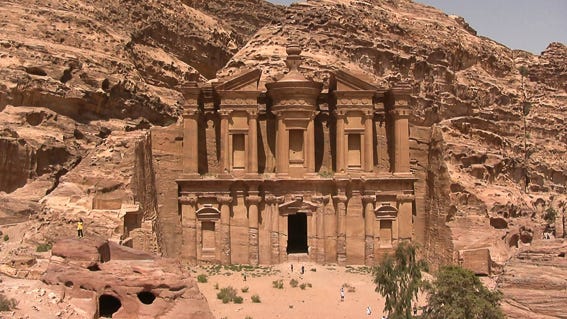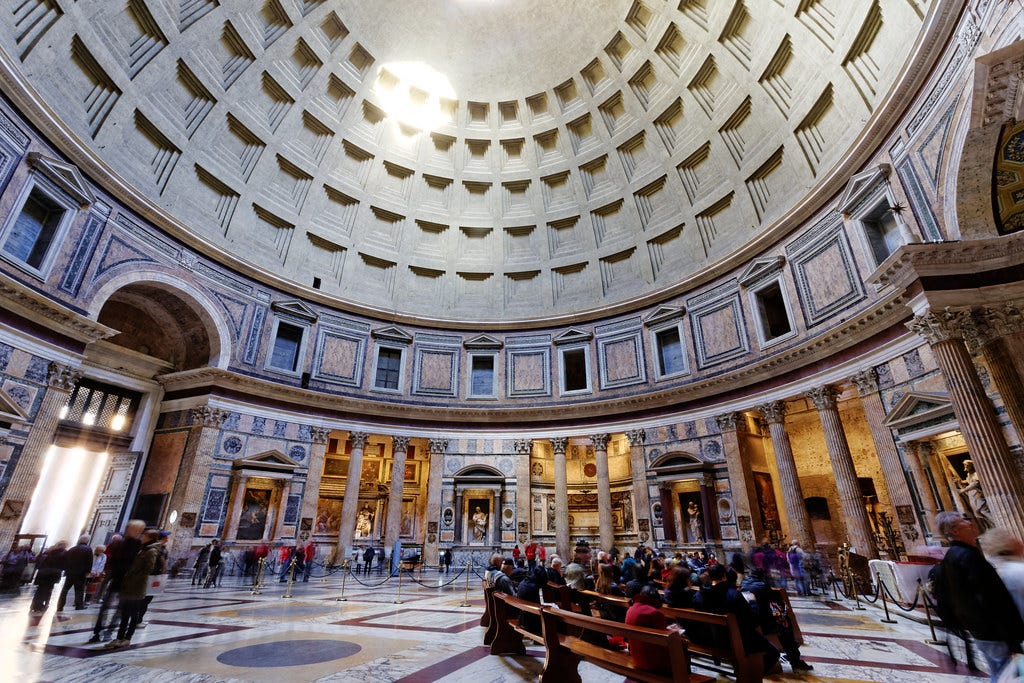10 Math Lessons Using the Most Exceptional Structures Ever Built
What if instead of just learning math, you could take a trip around the world studying the most exceptional buildings ever built?
What if you didn’t stop at math but added critical thinking & logic?
Kids thrive with real-world examples that inspire them. Here’s an example of how to do just that.
10 math lessons using the most exceptional structures ever built
BONUS critical thinking discussion questions!
Pyramids of Giza (Egypt):
Calculate the volume of one of the pyramid's blocks to estimate the total number of blocks used in construction.
Use geometry to find the surface area of one of the pyramid's sides.
BONUS: Discuss how kids think ancient Egyptians built these amazing structures - historians are still arguing about this.
Colosseum (Rome, Italy):
Estimate the seating capacity of the Colosseum by calculating the volume of the seating area and dividing it by an average space needed per person.
BONUS: Discuss why the “Roman” arches provide additional structural stability when stacked this way. Why do Gothic arches (ones with point) allow taller buildings?
Machu Picchu (Peru):
Calculate the slope of the terraced fields at Machu Picchu using the change in elevation and the horizontal distance.
Estimate the angle of the Inca stonework joints by measuring the lengths of the stones and using trigonometry.
BONUS: Why would these ancient people prefer to live so far up a mountain? How would life be easier/harder that high up?
Stonehenge (England):
Calculate the diameter and circumference of the Stonehenge circle to analyze its geometry.
Estimate the alignment accuracy of the stones by measuring the angular deviation from true north.
BONUS: Discuss how ancient people were able to move these huge rocks from hundreds of miles away. What might the students design to do this?
Parthenon (Athens, Greece):
Calculate the surface area of the Parthenon's pediment sculptures to estimate the amount of marble used.
Analyze the triglyph spacing and metope placement using geometry to understand the symmetry.
BONUS: This building used to be covered with beautiful art. Have students design their own art to complement the building. Show them famous Greek art as their muse.
Taj Mahal (Agra, India):
Estimate the number of marble tiles used in the Taj Mahal's intricate design by calculating the area of each type of tile.
Measure the height and length of the main dome to calculate its volume.
BONUS: Discuss the architectural challenges with building domes, especially ones that flair out like this one.
Chichen Itza (Mexico):
Calculate the height of the El Castillo pyramid by using trigonometry with measurements of its base width and angle of elevation.
BONUS: Discuss how these impressive buildings were lined up with the sun and stars. How might the ancients have done this?
Angkor Wat (Cambodia):
Estimate the area covered by the outer walls of Angkor Wat to understand the scale of the complex.
Analyze the symmetry of the temple's layout using measurements of the main axis and its components.
Petra (Jordan):
Measure the width and height of the Al-Khazneh (Treasury) façade to calculate its surface area.
Estimate the number of steps on the path to the Monastery by measuring a section and extrapolating.
BONUS: What are the different challenges that occur with building a standalone building compared to making a facade out of rock? How might this change construction or the skills needed?
Pantheon (Rome, Italy):
Calculate the diameter of the Pantheon's dome and use it to determine its radius, which was equal to its height.
Measure the distance from the oculus (central opening) to the floor to estimate the size of the interior space.
BONUS: This building has inspired many others. Can they think of which ones? Why might other civilizations like to copy this building?
Ancient architecture is truly glorious.
Foster a love of architecture, beauty, and history all while teaching math.
Why do we even consider teaching it another way?
~Claire Honeycutt aka Hippy Mom
Join the 𝓒𝖑𝖆𝖗𝖎𝖋𝖎𝓔𝒅 Community. Paid members Receive Exclusive Education Strategies, Thriving Learner Workshops, Masterpiece Lesson Plans, 24/7 Community, & Science of Kids.
If you enjoyed this post, you might also enjoy👇
Top Education Books Every Parent Should Read👇
If I could start over, this is the book list I’d read to prepare to educate my children.














For those of us who need more help. Can you post how you would set up the problems and the answers to them?